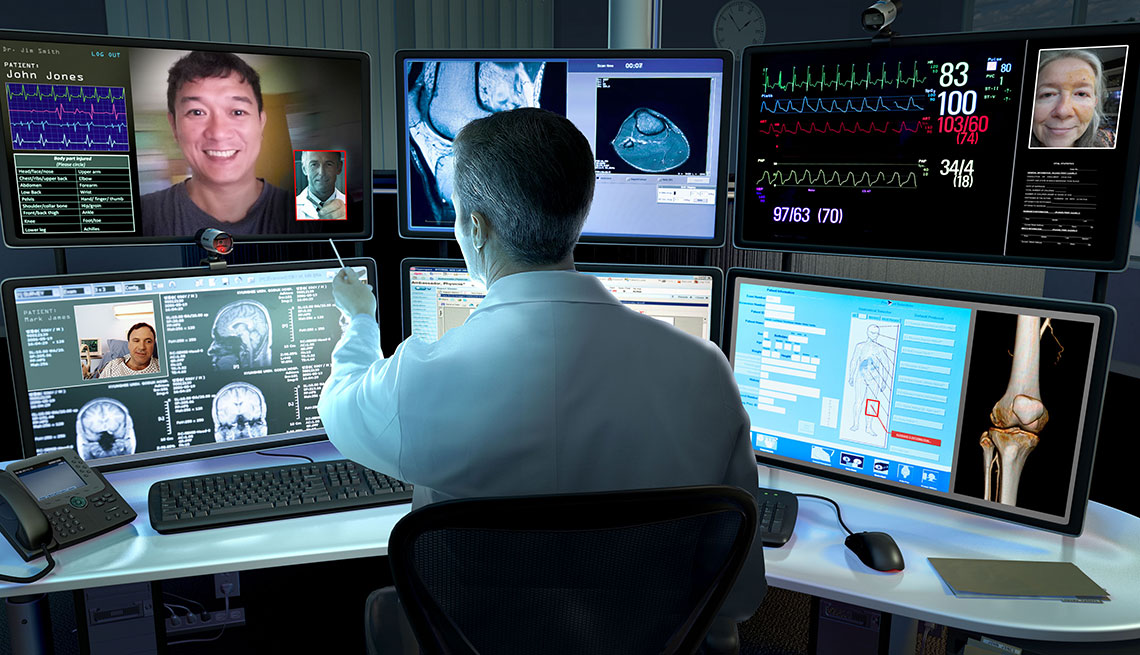Highlights of Cisco Roundtable: Expanding the Internet for the Future: Supporting First Responders and Society at Large
The agenda at Cisco’s April 28th roundtable “Expanding the Internet for the Future, Today: Supporting First Responders and Society at Large,” was focused on how the coronavirus is impacting our use of the internet from expanded online learning for students and adults alike to increased telehealth platforms (more on this subject below).
The discussion featured guest panelists including representatives from AT&T, Comcast, Cox Communications, Facebook, Verizon, and the University Texas-Gavelston Medical Branch. The panelists first took turns giving their individual perspectives on the current state of the internet before shifting focus on innovating to meet the demands of the future.
The conference opened with host Jonathan Davidson, senior vice president and general manager, Mass Scale Infrastructure Group at Cisco sharing some choice illustrative Cisco Webex data. So far this month, Cisco has hosted more than 20 billion virtual meeting minutes. For perspective, that is up from a mere 14 billion last month. These March 2020 totals doubled the meeting minutes from February. Around the globe, traffic appears to be leveling off or decreasing from recent highs.
Speakers included AT&T’s FirstNet SVP Jason Porter (a long time colleague and September 2020 IEEE ComSocSCV workshop speaker) and Andrés Irlando, president of Verizon’s “public sector” that sells services to public-safety officials.
Almost all roundtable participants said they have been working overtime during the past few weeks to make sure doctors, nurses and other medical professionals and first responders remain connected as they fight COVID-19. “This was like a fire, flood and tornado in every single city at the same time,” said AT&T’s Porter commented on the demand for FirstNet services. Jason and other speakers said their networks have managed to meet that demand, and that traffic growth is beginning to plateau.
However, “this gives us a peak at what the future looks like,” argued Verizon’s Irlando, explaining that traffic likely will start to decline as most Americans return to work, but some things won’t return to the way things were.
…………………………………………………………………………………………………………………………………………………………
Cisco has a website to help healthcare providers transition to virtual healthcare. There you will find resources for scheduling, conducting, and joining virtual consultations between Doctors and patients.

Telehealth and complex video session between Doctor and Patient
…………………………………………………………………………………………………………………………………………………………
During the second half of the roundtable, panelists each shared the vision on ways to revolutionize the current model to provide access for people around the globe. Ideas ranged from the importance of government subsidies when it comes to building this infrastructure in some areas, to reverse auctioning portions of spectrum to cover more isolated communities. Facebook Vice President of Connectivity Dan Rabinovitsj floated the idea of allowing spectrum sharing in more remote areas without facing fines as well as the idea of utilizing the recently opened 6 GHz band for internet access around the globe. As individuals posed questions, Cisco executive Stephen Liu touched on the idea of a flexible consumption system to revolutionize the traditional service model.
“This allows Service Provider customers to procure equipment fully loaded with all the bandwidth they need, but only pay for what they use based on licensing. That way, if surges occur such as what happened with COVID-19, the capacity can be added immediately and paid for at a later time. The licenses can be pooled as well so that capacity could be moved from lower traffic areas into high traffic areas,” Liu said.
A huge problem for telehealth is insurance coverage. Light Readings Mike Dano wrote in a blog post:
One of the biggest obstacles was how healthcare insurance, including Medicare and Medicaid, account for telehealth services. Prior to the pandemic, healthcare pricing generally discouraged the use of videoconferencing and phone calls for doctor’s visits, but new rules implemented due to COVID-19 now incentivize the practice, King explained.
In the telecom sector, the FCC is working to promote telehealth offerings. Earlier this month, the agency voted to adopt a $200 million telehealth program as part of Congress’ CARES Act.
……………………………………………………………………………………………………………………………………………………………….
Currently, billions of people remain without internet access despite efforts to close the digital divide. Today, Cisco published the “Cisco Inclusive Future Report 2020” estimating that bringing those currently with internet access online would increase the worldwide economy by nearly $7 trillion and “would lift 500 million people out of poverty.” More than one-third (35%) of people in developing countries lack access to the internet compared to 80% of individuals in more “advanced economies.” The report also discusses the problems inherent with so-called digital literacy meaning a person’s basic understanding of using the internet, one of the principal roadblocks preventing “digital inclusion.” Internationally, nearly one-quarter of adults lack such digital literacy.
As the coronavirus continues to take its toll on populations and economies around the globe, the inadequacies of our digital infrastructure have been thrust into the spotlight. Current barriers to internet access has innumerable disadvantages for humans and economies around the globe. As has been illustrated during this pandemic-induced grand digital experiment, a well-equipped digital infrastructure has far-reaching social and economic implications for humans around the globe.

References:
https://www.webex.com/webexremotehealth.html


